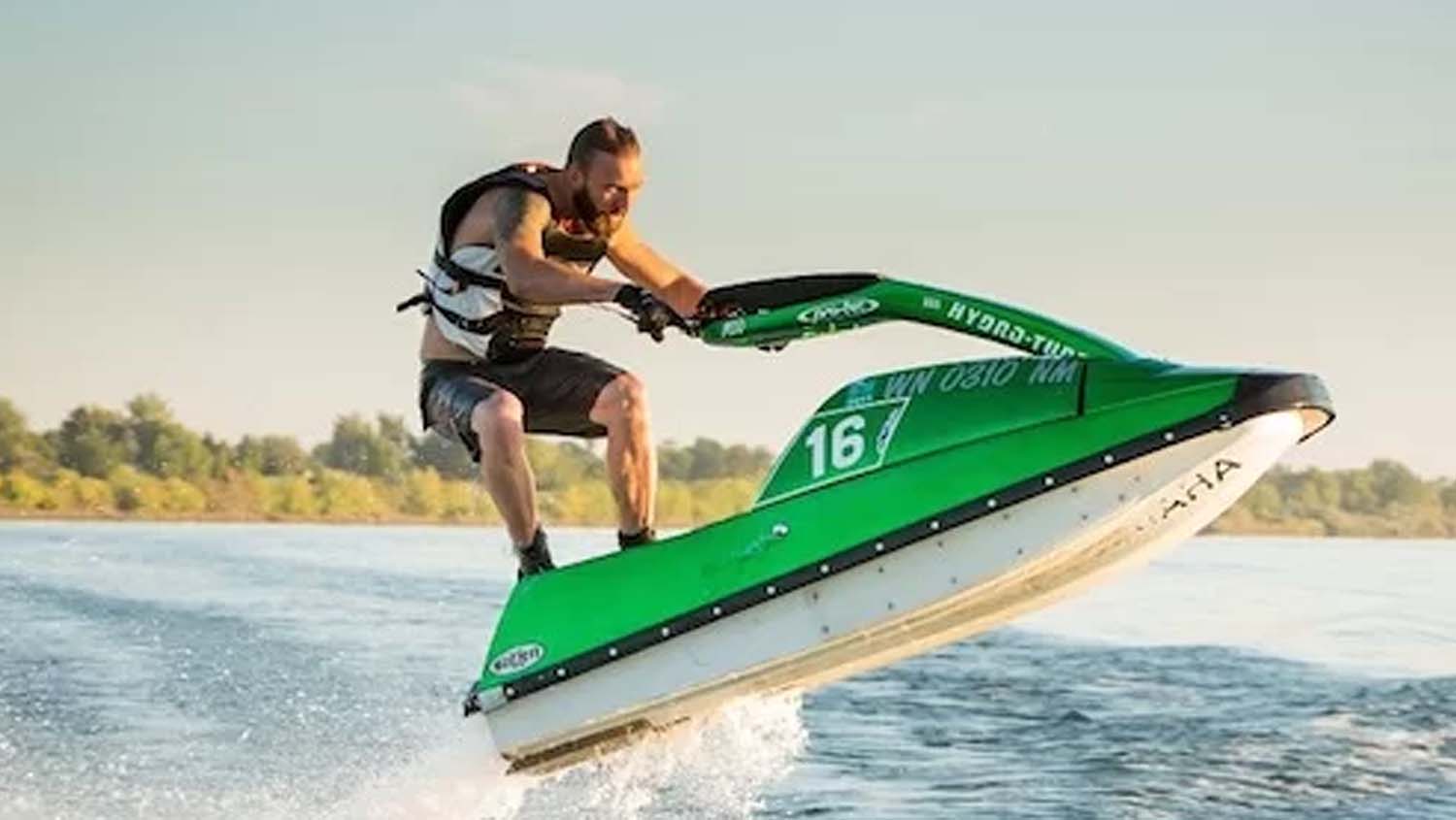Jetskis have been around since the mid 60s when an Australian called Clayton Jacobsen II (who lived in Byron Bay) was looking for a sports activity as fun as his (then) sport of motocross, but with less chance of getting hurt when you fell off. He based his original design on smaller personal water craft developed in the UK and Germany which were then called ‘water scooters’.

The big difference between a regular boat and a jetski is that it is powered by an internal water jet motor as opposed to the more conventional outboard. The motor sucks water through an inlet on the bottom of the jetski using an impeller, and this water is then jetted out the back to propel the jetski forward. The jetski is manoeuvred from left to right using the handlebars which move the nozzle of the water jet from side to side.
As quite a lot of water has to be forced through the internal tube, jetskis required quite powerful engines – a larger jetski will often have an engine of a similar size to one in a small car – around 1.5l capacity.
Technically speaking, the term ‘Jetski’ is in fact owned by the Kawasaki brand and only (legally) describes their bits of kit, however, much like the word ‘hoover’ the term has become a generic term for all ‘personal water craft’ (or PWC’s).
As you’d expect for such a water-loving nation, Australia has more than its fair share of jetskis – in Queensland alone there are over 20,000 jetskis registered, with registrations increasing all the time. Around three quarters of these are based in South East Queensland.
Which jetski will be the best choice for you will depend on what you’re planning to use it for*. If it’s just for yourself and for having some fun on the water, a solo stand-up jetski may be the best option, although sit down solo jetskis are also available, they are a bit bigger and more expensive. If you’re looking for something that can accommodate more than one person, there are models that can take up to four people.
Much like surfboards, some jetskis are really only for experienced riders – the shorter and narrower models are much faster and more manoeuvrable, but not the best to learn on. It’s best to start out with a more stable jetski design, which in practice means a wider and slower, less manoeuvrable model.
Although jetskis are mostly associated with recreational activity, they are also used for an array of other water-based activities – they are increasingly used by the surf lifesavers as rescue craft, and are used for water-based law enforcement around the world, and the US Navy actually uses them as remote controlled surface targets.
In the seaside town of Bournemouth in the UK they are even used by food delivery service Deliveroo to deliver food to customers on the beach. It’s a lot quicker than driving, apparently.
*also bear in mind that, in Australia, you will need to have a valid marine licence to operate a jetski, if it has an engine with more than 4.5kW of power (pretty much all jetskis have more powerful engines than this)



